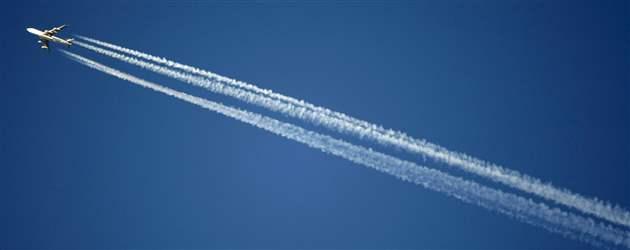The United States has negotiated bilateral open skies agreements to deregulate airline competition on US international routes, but little is known about their effects on travelers’ welfare and the gains from the US negotiating agreements with more countries. We develop a model of international airline competition to estimate the effects of open skies agreements on fares and flight frequency. We find the agreements have generated at least $4 billion in annual gains to travelers and that travelers would gain an additional $4 billion if the US negotiated agreements with other countries that have a significant amount of international passenger traffic.

A passenger jet heads east across the Pacific Ocean at sunrise from Sydney. Australia and the U.S. signed an open skies agreement in 2008. REUTERS/Tim Wimborne
Introduction
Following America’s successful airline deregulation experiment in the late 1970s, many countries deregulated their domestic airline markets. In contrast, deregulation of international airline markets has occurred more slowly. At the 1944 Chicago convention, the United States sought to establish multilateral agreements whereby market forces would primarily determine fares and capacities on international routes. But the effort failed, and ever since, bilateral agreements have provided the framework under which fares and service frequency between two countries are determined.
The Carter administration promoted the idea of “open skies,” liberal bilateral agreements that freed market forces to be the most important determinants of fares and capacity. Beginning with a successful agreement with the Netherlands in 1992 and a recent one with Japan in late 2010, the United States has tended to consum-mate open skies agreements with one country at a time. Other countries have also taken that approach, while multilateral agreements among countries in Africa, South America, and the European Union have allowed participants to serve each others’ countries, usually without any restrictions on fares.
Generally, open skies agreements are initiated because two countries believe that mutual benefits exist from pricing freedom and having unfettered airline access to each other’s gateway airport(s); such agreements are opposed by countries that seek to protect their flag carrier(s) from competition by closely regulating fares, entry, and flight frequency. It is therefore important to know whether the open skies agreements that have been negotiated to date have increased competition and benefitted air travelers and whether travelers’ welfare would improve significantly if more countries negotiated open skies agreements. Cristea, Hummels, and Roberson (2012) analyzed data from the US Department of Transportation that included only US carriers and international routes flown by those carriers and estimated that open skies agreements have reduced fares, adjusted for changes in flight frequency and new routings, 32 percent compared with fares in markets that remained regulated. Piermartini and Rousová (2013) found that full adoption of open skies agreements would increase passenger traffic worldwide 5 percent, but they did not assess the effects on fares. Finally, Micco and Serebrisky (2006) found that open skies agreements that have been negotiated between 1990 and 2003 and that govern air cargo and passengers have caused a 9 percent drop in the cost of shipping freight by air.
A related literature on international airline competition assesses the effects on travelers of airline alliances where US and foreign carriers have established limited marketing arrangements, such as a reciprocal frequent flier program, or an interna-tional code-share agreement that allows an airline to sell seats on a partner’s planes as if they were its own. Alliances facilitate interline traffic across the networks of the partners, providing “seamless” service in city-pair markets where single-carrier service is not available (Brueckner 2001). Brueckner, Lee, and Singer (2011) provides recent evidence that alliances reduce fares relative to those offered by two nonaligned carriers by eliminating double marginalization of interline fares. Because alliances could account for some of the benefits attributable to open skies agreements, it is important to distinguish between the two policies’ effects on travelers’ welfare.
In this paper, we draw on a large sample of major US and non-US international routes that are served by the world’s leading airlines to explore the effects of open skies agreements on air travelers’ welfare, accounting for changes in fares and flight frequency. We estimate a model of airline market demand, pricing, flight frequency, and market structure and find that open skies agreements have generated at least $4 billion in annual gains to travelers on our sample of US international routes, which includes almost a 15 percent reduction in fares and amounts to roughly 20 percent of carriers’ annual revenues on those routes. Moreover, we find that travelers would reap another $4 billion annually if US policymakers could overcome the political obstacles that have prevented them from negotiating open skies agreements with other countries that have a significant amount of US international passenger traffic. Given that open skies policies have advanced with little publicized evidence of their benefits to travelers, broad dissemination of this (and other) positive evidence may spur policymakers to eliminate the remaining economic regulations on foreign air-line competition and to enable the world’s airlines to operate efficiently in a fully deregulated environment.


Commentary
Open skies: Estimating travelers’ benefits from free trade in airline services
May 21, 2015